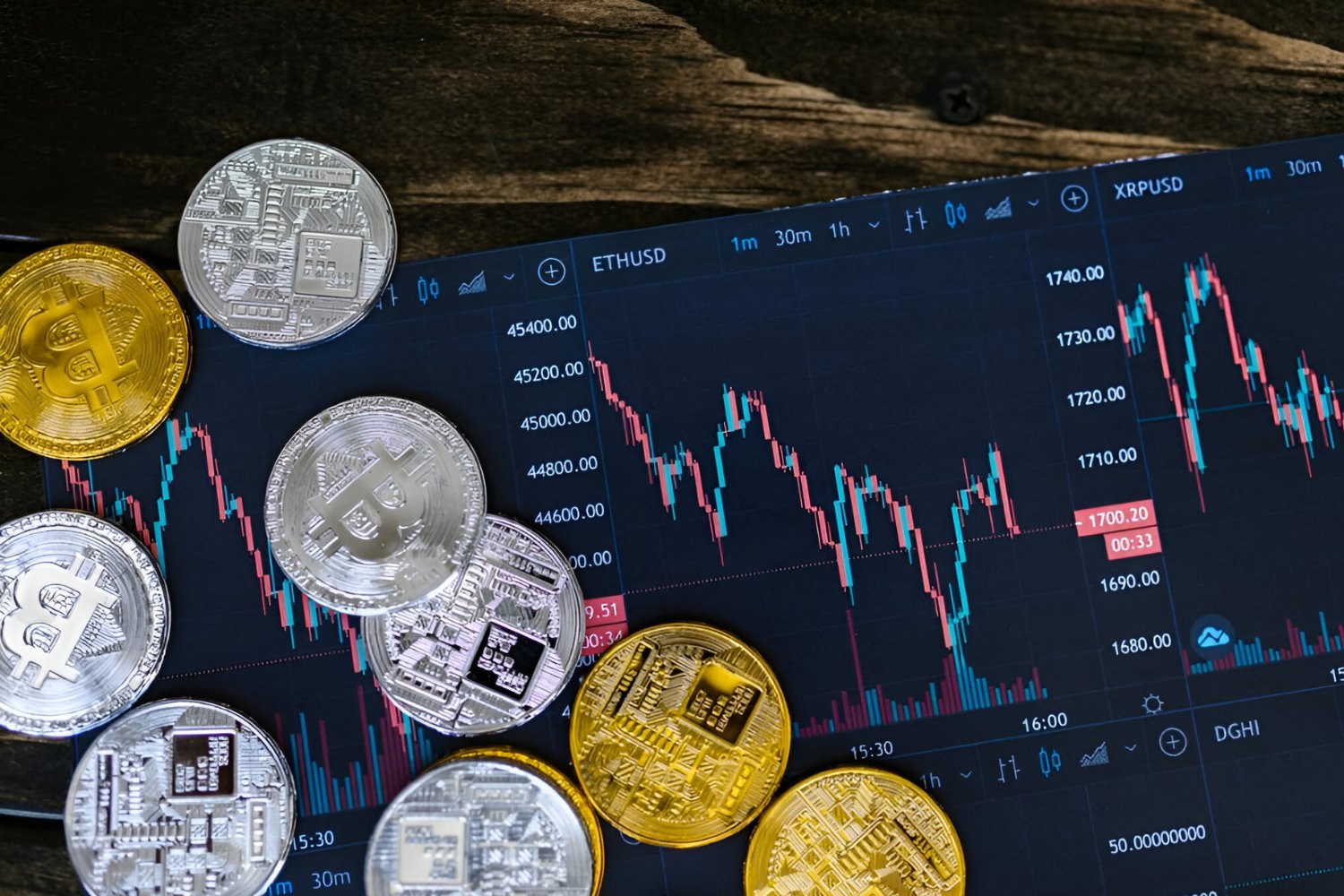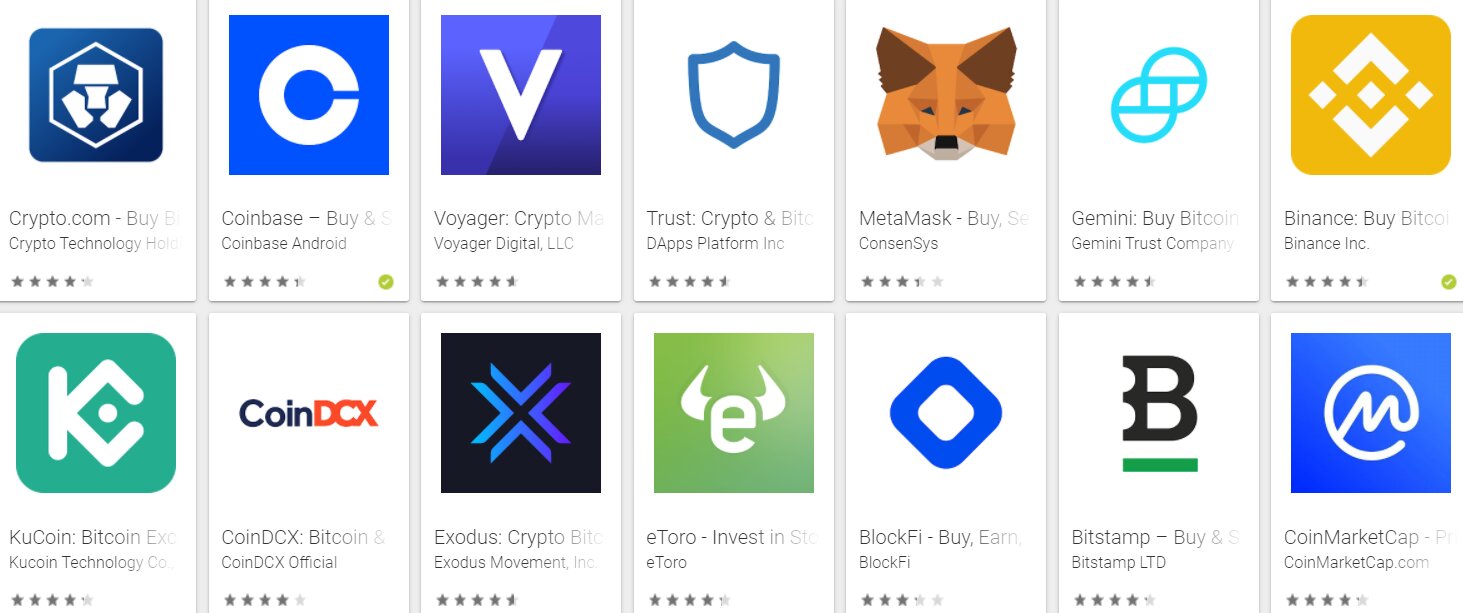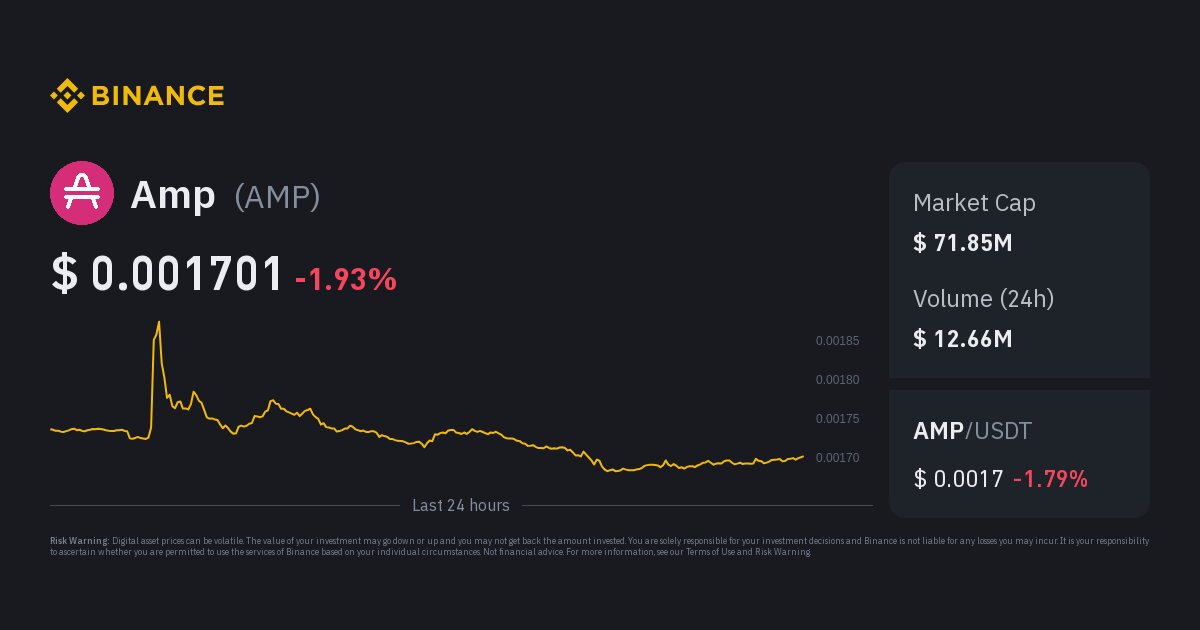Introduction
Welcome to the world of automated market maker (AMM) cryptocurrencies! In this rapidly evolving digital landscape, AMM cryptos have gained significant attention and have become an integral component of decentralized finance (DeFi). In this article, we will explore the fundamental concepts of AMM cryptos, how they work, their advantages, limitations, and some popular examples in the market.
As the name suggests, AMM cryptos are automated systems that provide liquidity to decentralized exchanges (DEXs) in a permissionless and decentralized manner. They have revolutionized the way we trade and exchange digital assets by eliminating the need for traditional order books and centralized intermediaries.
One of the key characteristics of AMM cryptos is their reliance on algorithms and smart contracts to facilitate trading. These protocols automatically calculate token prices and execute transactions based on predefined mathematical formulas. This automated process ensures constant liquidity availability for users, enabling them to easily buy, sell, or exchange various cryptocurrencies.
AMM cryptos have gained immense popularity due to their ability to address some of the limitations of traditional exchanges. By leveraging the power of blockchain technology, AMMs enable instant settlements, reduce costs, and eliminate the need for intermediaries. Moreover, they promote transparency, as all transactions are recorded on the blockchain and can be independently verified.
However, it is important to note that AMM cryptos are still relatively new and come with their own set of limitations. Market manipulation, impermanent loss, and potential vulnerabilities in smart contracts are some of the risks associated with utilizing AMM protocols.
In the following sections, we will delve deeper into how AMM cryptos work, explore their advantages and limitations, and highlight a few of the most popular AMM cryptocurrencies. So, let’s dive in and discover the fascinating world of AMM cryptos!
What is AMM Crypto?
AMM stands for automated market maker, and an AMM crypto refers to a cryptocurrency that utilizes an automated market maker protocol to facilitate trading on decentralized exchanges (DEXs). In traditional centralized exchanges, trading is typically conducted using order books, where buyers and sellers place orders at specific prices. However, AMM cryptos revolutionize this process by providing liquidity through algorithmic pricing models and smart contracts.
AMM cryptos eliminate the need for traditional order books and rely on liquidity pools instead. Liquidity providers deposit their tokens into these pools, which are then used to facilitate trades. The prices of the tokens are determined by an algorithm that ensures the smooth functioning of the market. In essence, AMM cryptos act as decentralized market makers, matching buyers and sellers without the need for a centralized authority.
The most common algorithm used by AMM cryptos is the constant product formula, also known as the x * y = k formula. According to this formula, the product of the quantities of two tokens present in a liquidity pool remains constant, regardless of the individual token amounts. As a result, when tokens are bought, the quantity of one token increases, while the quantity of the other token decreases to maintain the constant product.
AMM cryptos bring several advantages to the world of decentralized finance. First and foremost, they provide liquidity, ensuring that users can easily trade their tokens without depending on the availability of buyers or sellers. This solves the problem of low liquidity that often plagues smaller or less popular tokens on centralized exchanges.
Furthermore, AMM cryptos are accessible to anyone with an internet connection, as they operate on a permissionless basis. This opens up trading opportunities for individuals in regions where traditional financial systems are lacking or inaccessible. Additionally, AMM cryptos promote transparency, as all transactions are recorded on the blockchain and can be verified by anyone.
It’s important to note that while AMM cryptos offer numerous benefits, they also have some limitations. Market manipulation can be a concern as individuals with significant token holdings can manipulate the prices within a liquidity pool. Additionally, AMM cryptos are susceptible to impermanent loss, which occurs when the prices of tokens in a liquidity pool fluctuate, resulting in the loss of value for liquidity providers.
Now that we have a better understanding of what AMM cryptos are, let’s explore how they work in practice.
How does an AMM Crypto work?
An AMM crypto operates through a set of algorithms and smart contracts that enable the automatic execution of trades and liquidity provision on decentralized exchanges (DEXs). Let’s dive deeper into the inner workings of AMM cryptos to understand how they function.
1. Liquidity Pools: AMM cryptos rely on liquidity pools, which are essentially smart contracts that hold a reserve of tokens. Liquidity providers deposit tokens into these pools in order to provide liquidity and earn rewards. Each liquidity pool typically consists of two tokens, such as Ethereum (ETH) and an ERC-20 token.
2. Algorithmic Pricing: The prices of tokens in a liquidity pool are determined algorithmically based on a mathematical formula. The most commonly used formula is the constant product formula, where the product of the quantities of tokens in the pool remains constant. This ensures that as one token is bought, the quantity of the other token decreases, maintaining the equilibrium.
3. Swapping Tokens: Users can easily swap one token for another within a liquidity pool by providing an input amount of one token and receiving an output amount of the other token. The algorithm calculates the exchange rate based on the current reserves and executes the trade automatically.
4. Fees and Rewards: To incentivize liquidity providers and ensure the sustainability of the ecosystem, AMM cryptos charge a trading fee on each transaction. This fee is proportionally distributed among liquidity providers based on their share of the total liquidity pool. Some AMM cryptos also use governance tokens to provide additional rewards to users.
5. Price Impact and Slippage: When a large trade is executed on an AMM, it may have a significant impact on the price of the token being traded. This is known as price impact or slippage, and it can occur due to the limited liquidity in the pool. Higher slippage is observed when the pool has lower liquidity, making it less favorable for large trades.
Overall, the core principle behind the working of an AMM crypto is to provide a decentralized and automated system for users to trade tokens without relying on centralized intermediaries. By leveraging algorithms and smart contracts, AMM cryptos ensure constant liquidity availability and seamless token swapping within the liquidity pools.
Now that we have explored how AMM cryptos work, let’s move on to discussing their advantages in the decentralized finance landscape.
Advantages of AMM Crypto
AMM cryptos offer several advantages that have made them a popular choice in the decentralized finance (DeFi) ecosystem. Let’s explore these advantages in more detail:
1. Continuous Liquidity: One of the key advantages of AMM cryptos is the provision of continuous liquidity. Liquidity providers deposit their tokens into the liquidity pools, ensuring that there are always tokens available for trading. This eliminates the issue of low liquidity, which is often experienced with smaller or less popular tokens on centralized exchanges.
2. Accessibility: AMM cryptos operate on a permissionless basis, meaning that anyone with an internet connection can access and utilize their services. This provides individuals in regions where traditional financial systems are lacking or inaccessible with the opportunity to trade and invest in various cryptocurrencies.
3. Decentralization: AMM cryptos are built on blockchain technology, which inherently promotes decentralization. Transactions and trades are executed through smart contracts without the need for intermediaries or central authorities. This empowers users by giving them full control over their funds and reducing the risk of censorship or manipulation.
4. Transparency: All transactions conducted on AMM cryptos are recorded on the blockchain and are visible to everyone. This promotes transparency and allows users to independently verify the integrity of the system. It also helps in building trust among participants and creates a more secure trading environment.
5. Lower Costs: Traditional centralized exchanges often involve high fees for trading and accessing liquidity. In contrast, AMM cryptos tend to have lower fees, as they eliminate the need for intermediaries and rely on smart contracts for execution. This can result in significant cost savings for users, making trading more accessible and affordable.
6. Innovation and Flexibility: AMM cryptos have fostered innovation in the DeFi space by enabling new types of financial products and services. The automated nature of AMM protocols allows for the creation of various features, such as yield farming, decentralized lending and borrowing, and token swaps. This flexibility opens up exciting opportunities for users to engage in different investment strategies and earn yield on their assets.
While AMM cryptos offer numerous advantages, it is important to note that they also come with certain risks and limitations. Market manipulation, impermanent loss, and smart contract vulnerabilities are among the concerns that users should be aware of when using AMM protocols.
Now that we have explored the advantages of AMM cryptos, let’s discuss some limitations that need to be taken into consideration.
Limitations of AMM Crypto
While AMM cryptos offer numerous advantages, it is important to understand and consider their limitations. Here are some key limitations associated with AMM cryptos:
1. Market Manipulation: AMM cryptos are susceptible to market manipulation, especially in illiquid markets. Since liquidity providers determine the prices within a liquidity pool, individuals with significant token holdings can potentially manipulate the prices for their advantage. This can result in unfavorable trading conditions for other users.
2. Impermanent Loss: Impermanent loss refers to the temporary loss of value that liquidity providers may experience when providing liquidity to AMM cryptos. It occurs when the prices of the tokens in the liquidity pool fluctuate. Liquidity providers are exposed to the risk of losing out on potential gains compared to simply holding the tokens. While impermanent loss may fade over time, it is a potential risk that needs to be considered.
3. Smart Contract Risks: AMM cryptos operate through smart contracts, which are subject to code vulnerabilities and potential security breaches. If a smart contract is compromised, it can result in financial losses for liquidity providers and users. This highlights the importance of conducting thorough audits and due diligence before committing funds to AMM protocols.
4. Limited Liquidity: While AMM cryptos provide continuous liquidity, the depth of liquidity in the pools can vary. Smaller or less popular tokens may have limited liquidity, leading to higher slippage and price impact for larger trades. Hence, users should be cautious when trading significant amounts or illiquid assets on AMM platforms.
5. Limited Asset Variety: While AMM cryptos support a wide range of tokens, they may not have the same level of asset variety as traditional centralized exchanges. Users may find a more extensive selection of tokens on centralized platforms, including niche or low-liquidity assets. It’s essential to consider the available tokens and their market depth before engaging in trading on AMM cryptos.
6. Regulatory Uncertainty: The decentralized and global nature of AMM cryptos presents regulatory challenges. Different jurisdictions have varying stances on cryptocurrency regulations, which can impact the availability and legality of AMM platforms. Users should stay informed about the legal and regulatory landscape in their respective jurisdictions to ensure compliance.
Understanding the limitations associated with AMM cryptos is crucial for users and investors to make informed decisions. By being aware of these limitations, users can mitigate risks and navigate the decentralized finance ecosystem more effectively.
Now that we have explored the limitations of AMM cryptos, let’s take a look at some popular examples in the market.
Popular AMM Cryptocurrencies
As the decentralized finance (DeFi) ecosystem continues to evolve, several AMM cryptocurrencies have emerged as popular choices among users and investors. These cryptocurrencies have gained significant traction and are actively utilized on various decentralized exchanges (DEXs). Let’s take a look at some of the most popular AMM cryptocurrencies:
1. Uniswap (UNI): Uniswap is one of the pioneering AMM cryptocurrencies and is built on the Ethereum blockchain. It has a user-friendly interface and offers seamless token swaps and liquidity provision. Uniswap gained significant attention for its innovative use of the constant product formula and played a crucial role in the DeFi revolution.
2. SushiSwap (SUSHI): SushiSwap is a decentralized exchange platform and an alternative to Uniswap. It operates on the Ethereum blockchain and rewards liquidity providers with its native token, SUSHI. SushiSwap gained attention for its yield farming incentives and community-driven governance model.
3. PancakeSwap (CAKE): PancakeSwap is a popular AMM crypto that operates on the Binance Smart Chain (BSC). It offers low-cost transactions and cross-chain compatibility. PancakeSwap has gained traction among users due to its relatively low fees and extensive selection of tokens.
4. Curve Finance (CRV): Curve Finance is an AMM crypto that focuses on stablecoin trading. It is known for its low slippage and low fees, making it a preferred choice for users looking to trade stablecoins with minimal price impact.
5. Balancer (BAL): Balancer is an AMM crypto that allows for the creation of customizable liquidity pools. It offers dynamic portfolio management and enables users to create their own token portfolios with different weightings. Balancer provides flexibility and advanced features for liquidity providers and traders.
6. 1inch (1INCH): 1inch is an aggregator of decentralized exchanges that sources liquidity from multiple AMM protocols to offer the best possible rates for users. It operates on various blockchain networks, including Ethereum and Binance Smart Chain, and provides users with the ability to swap tokens at the most favorable prices.
These are just a few examples of the popular AMM cryptocurrencies in the market. It is important to conduct thorough research, consider factors such as liquidity, fees, and security, and choose platforms that align with individual trading preferences and risk tolerance.
Now that we have explored some popular AMM cryptocurrencies, let’s conclude our discussion on the fascinating world of AMM cryptos.
Conclusion
Automated market maker (AMM) cryptocurrencies have transformed the landscape of decentralized finance (DeFi), offering continuous liquidity, accessibility, and transparency to users around the world. Through AMM protocols, users can trade and swap various cryptocurrencies without relying on centralized intermediaries or traditional order books.
AMM cryptos operate through liquidity pools and algorithmic pricing models, ensuring constant liquidity availability and automated execution of trades. These protocols have several advantages, including continuous liquidity provision, accessibility to individuals in underserved regions, and the promotion of decentralization and transparency.
However, it is important to consider the limitations of AMM cryptos. Market manipulation, impermanent loss, smart contract risks, limited liquidity, and regulatory uncertainties are factors that users should be aware of when engaging in AMM trading.
Despite these limitations, AMM cryptos have gained significant popularity, and several cryptocurrencies have emerged as leaders in the space. Examples include Uniswap, SushiSwap, PancakeSwap, Curve Finance, Balancer, and 1inch, each with its unique features and strengths.
As the DeFi ecosystem continues to evolve, it is important for users to stay informed, conduct due diligence, and assess their risk tolerance before engaging in AMM trading. By understanding the fundamental concepts, advantages, and limitations of AMM cryptos, users can make more informed decisions in the rapidly changing world of decentralized finance.
Whether you’re a trader, liquidity provider, or enthusiast, exploring the world of AMM cryptos can unlock new opportunities and possibilities in the decentralized finance space. So, take the plunge, stay informed, and embrace the exciting world of automated market maker cryptocurrencies!

























